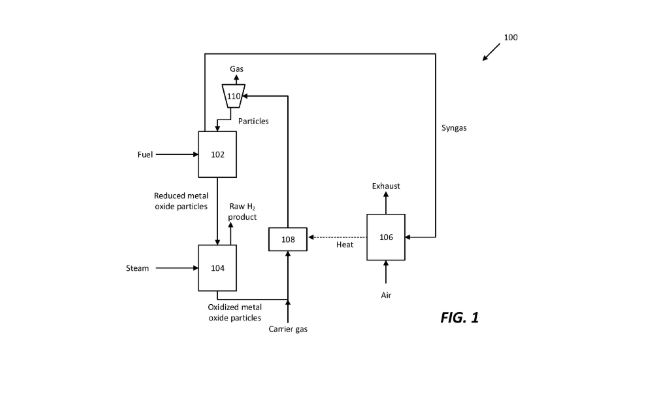In the ever-evolving field of renewable energy, a newly filed patent by the Ohio State Innovation Foundation could mark a significant advancement in hydrogen production technologies.
This reactor system is designed for efficient hydrogen generation, a crucial component of clean energy solutions, with potential applications across various industries.
The patented system comprises two types of reactors, a heat source unit, a heat exchange unit, and several separation units. The first reactor is key to the system, facilitating the reaction of fuel—potentially sourced from biogas—with metal oxide particles. This reaction plays a vital role in the overall process, setting the stage for subsequent hydrogen production.
The second reactor in the system takes reduced metal oxide particles from the first reactor and introduces them to steam. This reaction generates hydrogen (H2) and oxidized metal oxide particles, completing a crucial step in the hydrogen production cycle. By effectively utilizing these reactors, the system aims to maximize hydrogen output efficiently.
Heat Management and Energy Recovery
Central to the functionality of this system is its innovative heat management approach. The oxidized metal oxide particles are heated utilizing a heat exchange unit, which derives its heat from a novel source. By combusting air alongside oxidation byproducts from the first reactor, the system efficiently generates necessary thermal energy. This process not only enhances efficiency but also highlights the sustainable aspects of the design.
Once heated, the oxidized metal oxide particles are directed to the separation units. Here, specific components are effectively segregated before being recycled back into the first reactor. This recycling process underscores the system’s sustainability and potential for long-term operational viability, reducing waste and optimizing material usage.
Stay updated on the latest in energy! Follow us on LinkedIn, Facebook, and X for real-time news and insights. Don’t miss out on exclusive interviews and webinars—subscribe to our YouTube channel today! Join our community and be part of the conversation shaping the future of energy.
